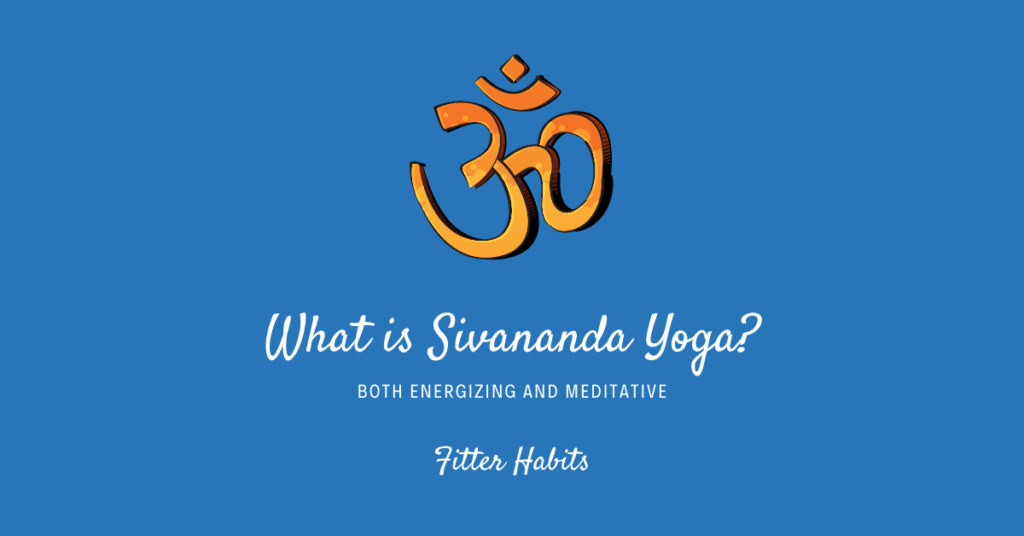What is Sivananda Yoga? In this article we offer an explanation of the underpinnings and sequence in ancient, spiritual Sivananda Yoga practice.
Yoga practitioners follow several schools and styles of yoga are available. Many people have heard of power flow or hot yoga, yin, restorative or yoga nidra. Ashtanga, Iyengar, Bikram and Baptiste yoga practices are fairly well known these days. Sivananda yoga is perhaps less well known, at least in the West. So, what is Sivananda yoga?
- Introduction
- Lineage of Sivananda Yoga
- The Five Points of Yoga
- The Four Paths of Yoga
- The Sivananda Yoga Sequence
- Sun Salutations
- 12 Basic Sivananda Poses
- 1. Headstand (Sirsasana)
- 2. Shoulderstand (Sarvangasana)
- 3. Plough (Halasana)
- 4. Fish (Matsyasana)
- 5. Sitting Forward Bend (Paschimottanasana)
- 6. Cobra (Bhujangasana)
- 7. Locust (Salabhasana)
- 8. Bow (Dhanurasana)
- 9. Half Spinal Twist (Ardha Matsyendrasana)
- 10. Crow (Kakasana)
- 11. Standing Forward Bend (Pada Hastasana)
- 12. Triangle (Trikonasana)
- The Final Word on: What is Sivananda Yoga?
Contents
- 1 Introduction
- 2 Lineage of Sivananda Yoga
- 3 The Five Points of Yoga
- 4 The Four Paths of Yoga
- 5 The Sivananda Yoga Sequence
- 6 Sun Salutations
- 7 12 Basic Sivananda Poses
- 7.1 1. Headstand (Sirsasana)
- 7.2 2. Shoulderstand (Sarvangasana)
- 7.3 3. Plough (Halasana)
- 7.4 4. Fish (Matsyasana)
- 7.5 5. Sitting Forward Bend (Paschimottanasana)
- 7.6 6. Cobra (Bhujangasana)
- 7.7 7. Locust (Salabhasana)
- 7.8 8. Bow (Dhanurasana)
- 7.9 9. Half Spinal Twist (Ardha Matsyendrasana)
- 7.10 10. Crow (Kakasana)
- 7.11 11. Standing Forward Bend (Pada Hastasana)
- 7.12 12. Triangle (Trikonasana)
- 8 The Final Word on: What is Sivananda Yoga?
Introduction
Sivananda Yoga is a spiritual form of yoga that can be traced back to Adi Sankaracharya (788-802 CE). He unified diverse spiritual practices into a cohesive system based on the Upanishads of the Four Vedas. Today several Sivananda yoga centers and ashrams are open around the world, including one on Paradise Island in the Bahamas.
My first experience with Sivananda yoga was not the most positive. I didn’t enjoy the system right away. This type of yoga was slower than the Baptiste power flow yoga I was more familiar with. Poses were held longer than I was used to, yet the practice was surprisingly challenging.
Over time, I have grown to love the practice, finding it both energizing and meditative.
Lineage of Sivananda Yoga
Two key swamis, or spiritual teachers, were critical to the development of this school of yoga.
Swami Sivananda
Swami Sivananda was born in India in 1887 and died in 1963. He was a medical doctor before renouncing worldly life and establishing an ashram in Rishikesh, India, in 1932. His mission was to serve humanity through yoga.
Swami Vishnudevananda
Swami Vishnudevananda was born in 1927 in India and died in 1993. In 1957, Swami Sivananda sent him to the West to spread the teachings of yoga. He founded the Sivananda Yoga Vedanta Centers in 1959 in Canada and set up yoga centers and ashrams throughout the world. He introduced the concept of a yoga vacation and established yoga teacher training courses in the West.
Sivananda Yoga is based on Swami Sivananda’s teachings to synthesize the principles of the four paths of yoga described in ancient yogic philosophy, along with the five points of yoga outlined by Swami Vishnudevananda. Let’s examine these elements that form the backbone of the Sivananda practice.
The Five Points of Yoga
The five points of yoga are as follows:
1. Proper Exercise
Proper exercise refers to asana or postures that are practised in a systematic way to benefit the entire body.
2. Proper Breathing
Proper breathing techniques are known as pranayama. This deep, conscious breathing, a powerful tool, is practiced near the beginning of the class.
3. Proper Relaxation
Proper relaxation refers to savasana, or deep rest. The idea is that a well-rested body performs more efficiently.
4. Proper Diet
A proper diet is vegetarian (avoiding harm to animals), natural, pure and simple. Caffeine and alcohol are to be avoided.
5. Positive Thinking and Meditation
Known as vedanta and dhyana, these lead to a less scattered and more peaceful mind, more happiness, and clear understanding.
The Four Paths of Yoga
These are the four paths of yoga:
1. Karma Yoga
The yoga of action or selfless service is seen as a way to open the heart. Many who work at Sivananda Ashrams and Yoga Centers do so on a voluntary basis.
2. Bhakti Yoga
The yoga of devotion involves prayers, chants and worship, and seeing God in all of creation.
3. Raja Yoga
The yoga of meditation leads to power and clarity of mind.
4. Jnana Yoga
The yoga of knowledge demands an investigation of the nature of the Self.
The Sivananda Yoga Sequence
Sivananda yoga has a systematic and precise approach to hatha yoga. The pace is slower, and the poses are held a little longer than in a typical vinyasa yoga class.
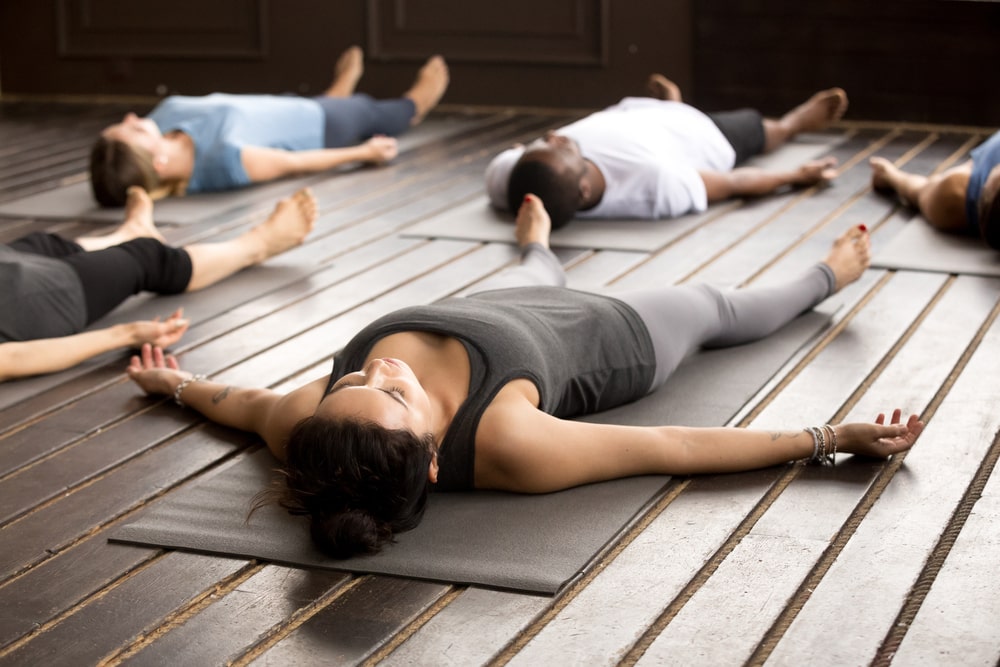
Each Sivananda class begins with resting in savasana (Corpse Pose). Then you move to opening chants, followed by pranayama (breathwork), usually kapalabhati (breath of fire) and anuloma viloma (alternate nostril breathing) and breath retention exercises.
Next come the sun salutations, followed by single and double leg raises. Then you practice a core asana sequence of 12 poses, punctuated by moments of rest in savasana. When that sequence is complete, you return to savasana, ending with tense and release exercises and a guided relaxation. The practice ends with a closing chant. A typical class lasts 90 minutes.
Sun Salutations
Sun salutations (surya namaskar) are a common part of many yoga practices. In Hindu mythology, the sun god, Surya, is worshipped as a symbol of health and immortal life. Sun Salutation is traditionally performed at dawn, facing the rising sun.
The Sun Salutation in Sivananda yoga is a sequence of twelve positions performed as one continuous flow. Breath is linked with movement so that each movement is performed on an inhale or an exhale. Sun salutations help prepare the body for the postures that follow.
12 Basic Sivananda Poses
Let’s take a closer look at the poses and some of their benefits.
Twelve basic yoga poses (asanas) form the foundation of the Sivananda sequence. The flow is designed to exercise every part of the body, stretching and toning the muscles and joints and the spine and skeletal system. The poses also benefit the internal organs, glands and nervous system.
1. Headstand (Sirsasana)
The first pose, perhaps the most challenging of all for beginners, is the headstand, or the “king of the asanas.” This inversion revitalizes the mind and body and offers many benefits, including increased confidence and better sleep.
2. Shoulderstand (Sarvangasana)
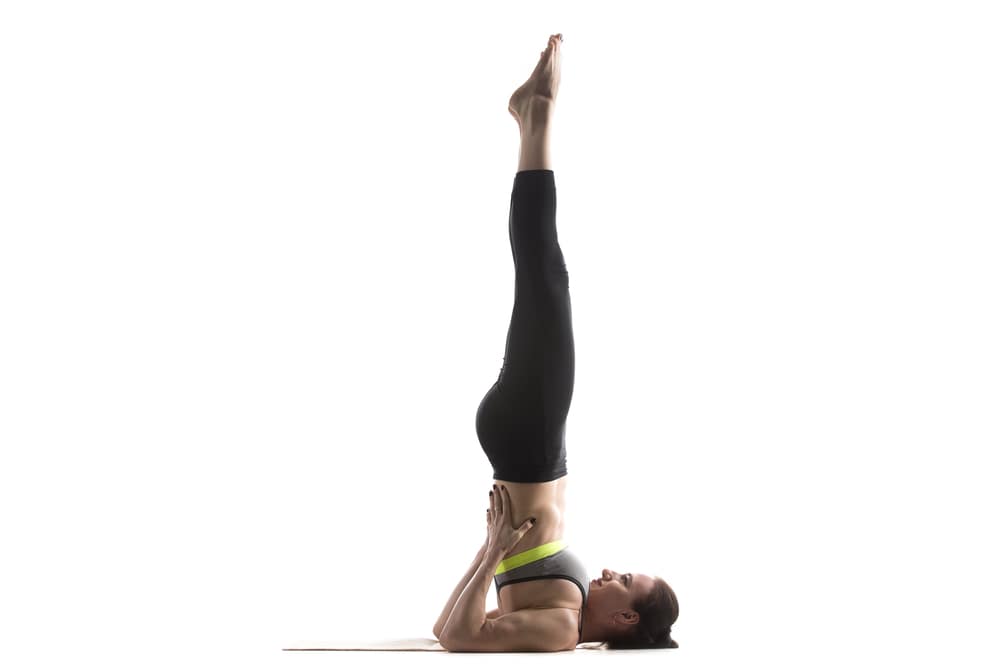
Next is another inversion, the shoulderstand, which stimulates the thyroid gland, regulating metabolism, heart rate and blood pressure. Inversions are good for improving varicose veins and sluggishness.
3. Plough (Halasana)
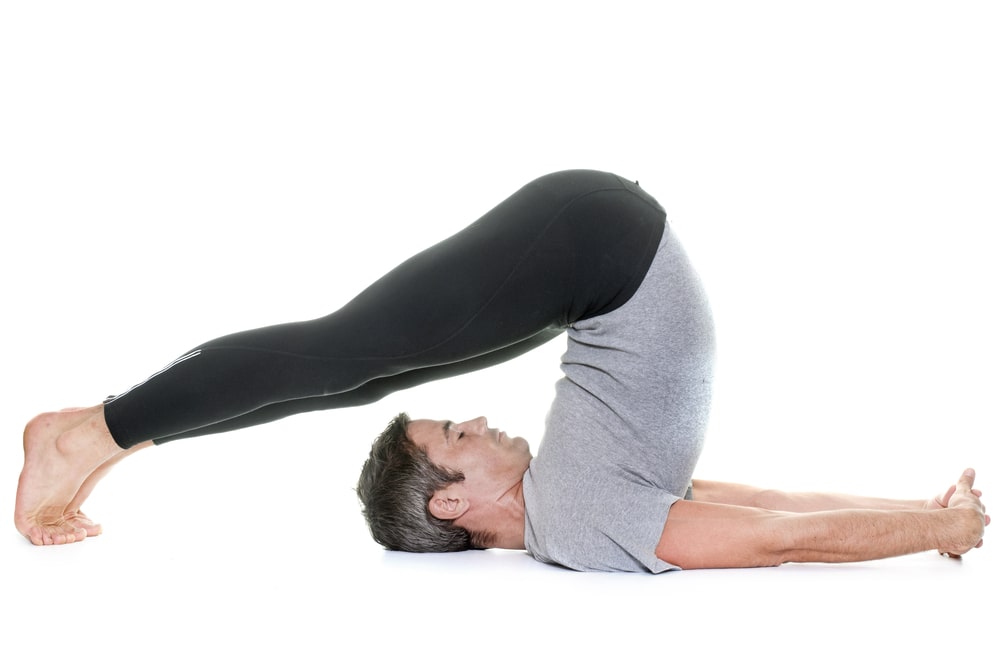
Plough is achieved when you bring your feet down from the shoulder stand to the floor behind your head. This is beneficial for the spine, as well as the muscles of the back, shoulders and arms and the internal organs.
4. Fish (Matsyasana)
Fish pose strengthens the respiratory system, increasing lung capacity. It involves lying on your back, then raising the chest and gently resting the top of the head on the mat. This is a great pose to counteract hunched shoulders.
5. Sitting Forward Bend (Paschimottanasana)
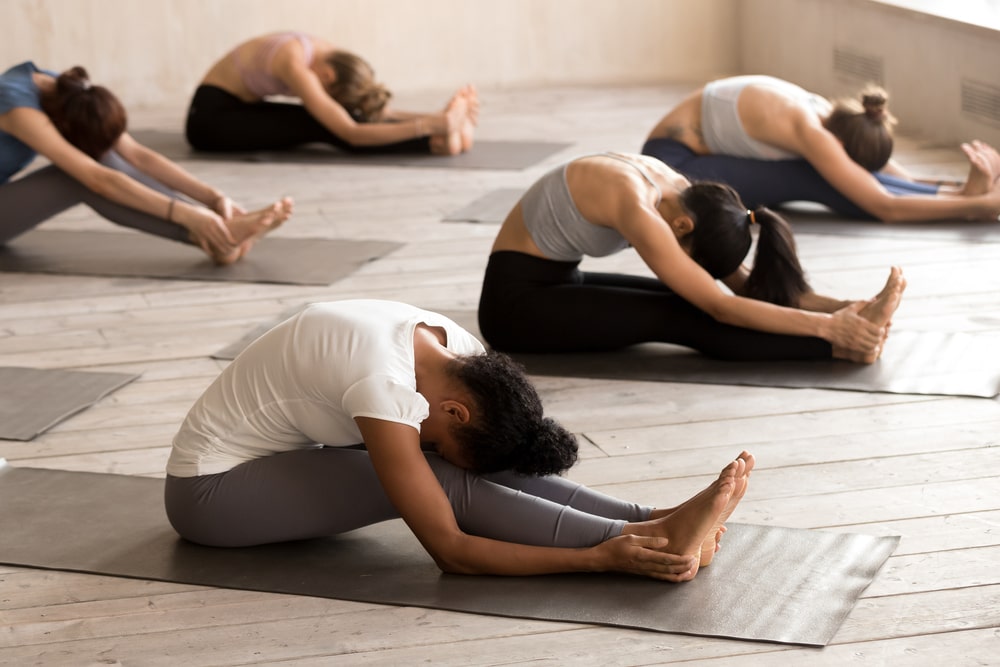
Sitting Forward Bend is calming and beneficial to the digestive system. This pose stretches all muscles in the back of the body, increasing flexibility in the hips.
6. Cobra (Bhujangasana)
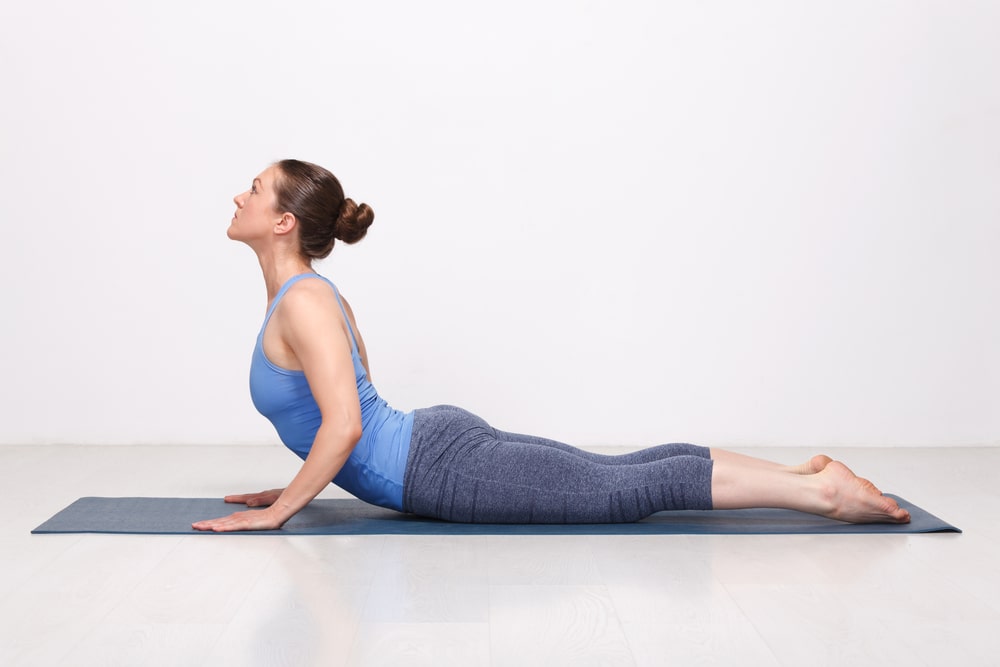
Cobra, performed by pressing into your hands while in a prone position, increases the spine’s flexibility. This strengthens the back muscles, invigorating the nerves and muscles of the spine and relieving lower back pain. Cobra also tones the ovaries and uterus are toned, making this a great pose for relieving menstrual problems.
Cobra is similar to Upward Facing Dog, however, in Cobra pose your legs remain on the floor and your arms are slightly flexed.
7. Locust (Salabhasana)
Locust relieves sluggish digestion, strengthens the abdominal walls, massages the internal organs and increases blood supply to the throat area. It also is excellent for relieving lower back pain because it strengthens the muscles of the upper back, legs and arms.
8. Bow (Dhanurasana)
Bow develops flexibility of the spine, invigorates the digestive organs and relieves gastro-intestinal disorders. This pose massages the back muscles.
9. Half Spinal Twist (Ardha Matsyendrasana)
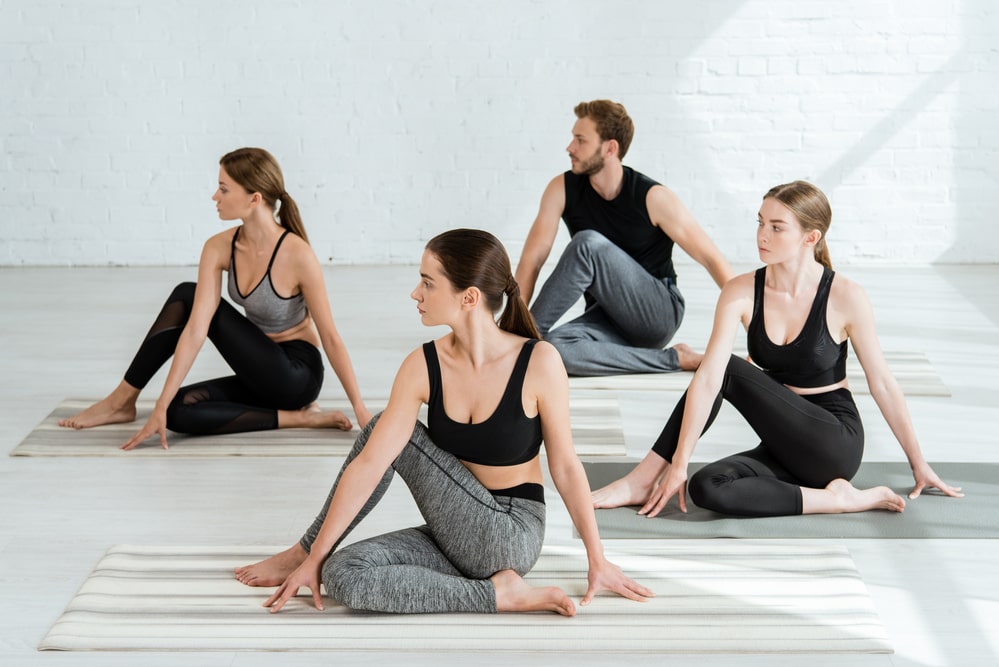
Half Spinal Twist is a great stretch for relieving lower back pain. This pose stimulates the sympathetic nervous system, and the digestive organs get a nice massage. Half Spinal Twist also helps significantly in improving posture.
10. Crow (Kakasana)
A challenging balancing pose, crow strengthens the muscles of the arms, wrists, forearms and shoulders. It increases concentration, removes sluggishness and promotes mental and physical balance.
11. Standing Forward Bend (Pada Hastasana)
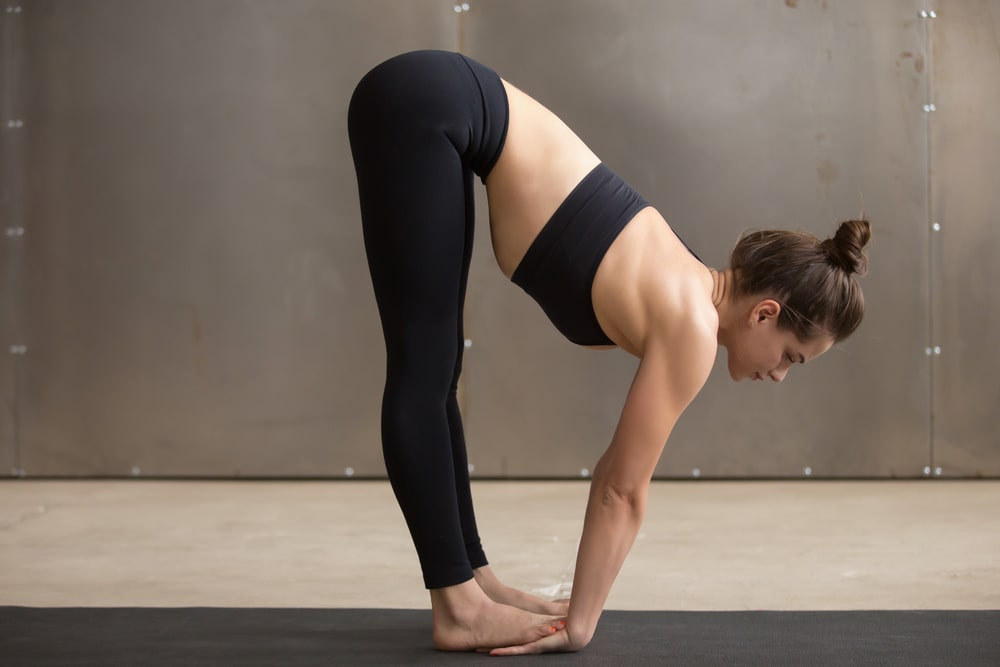
Standing Forward Bend increases spinal elasticity. The pose invigorates the nervous system and stimulates the brain. Standing Forward Bend helps release tension in the neck and stretches and strengthens Ieg and back muscles.
12. Triangle (Trikonasana)
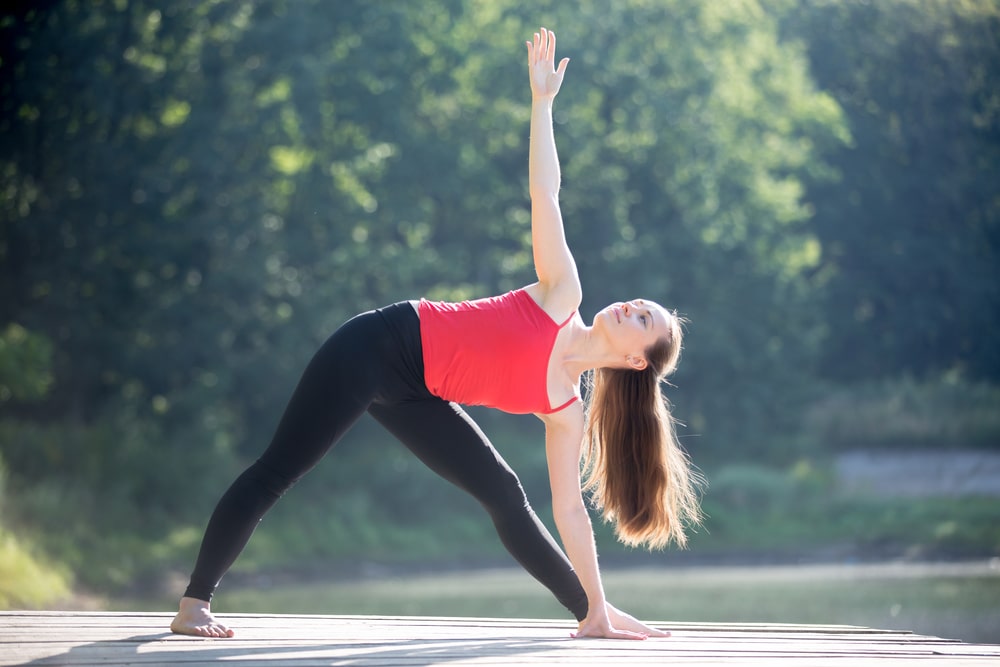
Triangle is a standing pose good for balance. It strengthens the pelvic area, legs and arms, and promotes hip flexibility. This pose gives each side of the body a nice stretch.
When the asana sequence is complete, you return to savasana.
The Final Word on: What is Sivananda Yoga?
Sivananda yoga is rooted in classical yoga and ancient yoga philosophy. The physical practice is always balanced with pranayama and conscious relaxation. These elements, as well as meditation, positive thinking and healthy habits can lead to peace and a sense of connection with others and the Divine.
Though perhaps less well known than other yoga practices, Sivananda yoga is an excellent option for anyone seeking a more spiritual yoga practice that is both challenging and meditative.

